Neurodermatitis in babies is a common skin disease. The reason: dermatitis is mainly a problem in the earliest months of life.
If weeping, itchy eczema plagues your offspring, creams, the right clothing and even your diet as a mother can provide relief.
Table of contents
Neurodermatitis In Babies: What Helps Against Scaly And Itchy Skin?
If your baby is affected by neurodermatitis, it may come as a shock to you as a mother.
But there is no reason to panic yet: The symptoms such as itching, reddened skin and cradle cap will disappear in most cases.
Nevertheless, you can do something now to gently treat your baby’s symptoms and, above all, to relieve the itching that is so annoying for your offspring.
Neurodermatitis In Babies: First Information Explained Compactly
Neurodermatitis, dermatitis or atopic eczema: There are many terms for this skin disease, which in many cases begins in infancy. It is an inflammatory disease that alternates between symptom-free phases and phases with symptoms.
The acute phases with symptoms such as itching and weeping skin eczema are triggered by so-called triggers.
Typical triggers include allergens, but also stress and immune system problems.
Atopic Dermatitis: The Name Is No Coincidence
Neurodermatitis is a disease that falls into the category of atopic diseases. Therefore, the skin disease is also called atopic dermatitis. Atopic diseases describe defensive reactions of the body, which are triggered by actually harmless environmental stimuli.
It is therefore simply a form of allergy. Like asthma and hay fever, atopic dermatitis is also one of these diseases.
More than half of those affected by dermatitis are in the first months or years of life; overall, about one in 6 to 12 children under the age of six is affected.
In one third of sufferers, the intensity of the neurodermatitis decreases with age, and many children are symptom-free from primary school age.
Where Does The Dermatitis Come From?
Unfortunately, the exact causes of neurodermatitis in babies and also in adults are not clearly understood.
There are theories that involve a predisposition. Children with one affected parent have a 20 to 40 percent risk of atopic dermatitis. Children with both parents affected even have a risk of up to 80 percent.
There is also a link between dermatitis and other atopic diseases.
For example, if you have asthma as a mother, which is also an atopic disease, your offspring could be affected by atopic dermatitis.
And if your partner also has asthma, hay fever or atopic eczema, the risk of neurodermatitis in your baby increases.
Environmental Influences Favor Neurodermatitis Relapses
However, it is not only hereditary factors that play a role in dermatitis. Environmental influences can also do their damage. Allergens in the environment can trigger flare-ups associated with bothersome symptoms.
Environmental stimuli are among the common triggers. Typical allergens that may be associated with dermatitis are:
- House dust
- Pollen
- Animal hair
- Mites
- Cosmetic ingredients
Even More Dermatitis Risks
Stress, infections or chemicals, and the wrong or too-tight clothing are also considered triggers. Furthermore, there are triggers for atopic eczema that are related to the intestinal flora of your baby.
If a damaged intestinal flora cannot produce any or only a few defense substances against pathogens, external neurodermatitis irritants have an easy time.
The intestinal flora can suffer in older children due to antibiotics, but also due to stress.
Baby’s Symptoms Of Neurodermatitis
How do you notice neurodermatitis in babies? Typical symptoms are:
- Cradle cap
- Skin lesions (red or lighter/darker than usual)
- weeping eczema
- scaly skin patches
- Itching
The first indication is the so-called milk crust. This curious name has nothing to do with breastfeeding or lactose intolerance. It is a skin condition that may be indicative of dermatitis.
Cradle cap is a white-yellow, often weeping crust on the skin that occurs in individual areas or in areas. The face of babies is particularly often affected.
However, cradle cap can also appear on the extensor sides of the legs and arms. Cradle cap should not be confused with a slightly yellowish, greasy scalp, which can sometimes occur on your baby.
Also, cradle cap alone is not a clear sign of dermatitis.
Fun Fact: The name of the symptom cradle cap comes from its similar appearance to burnt milk.
Another symptom is the generally reddened or color-changed skin. If some areas of your baby’s skin appear noticeably lighter or darker than usual, this could be a sign of neurodermatitis in the baby.
Characteristic is the strong itching. This comes from scaly, later also weeping eczema, which can appear on the face, ears or back of the baby’s head. Itching affects the child’s sleep and general well-being.
Furthermore, there is a risk: If your baby cannot be stopped from itching, viruses or bacteria can enter the skin. This can lead to skin infections.
Special mittens for babies mitigate the consequences of scratching.
When Does Reddened Skin Not Indicate Neurodermatitis In Babies?
Don’t panic if the baby’s skin changes: skin irritation is not always automatically an indication of atopic eczema.
Certain skin changes can also occur due to allergies to care creams or clothing as well as external irritants.
Do you suspect that your baby might have atopic dermatitis? Then you should observe the skin changes for a while. If the affected areas of the skin itch a lot or appear again and again in different areas, this could be atopic dermatitis.
The scaly skin eczema is also characteristic. You should be particularly attentive to babies with a predisposition to atopic dermatitis due to genetic factors.
Dermatitis: Are Bad Consequences Possible?
First of all, it is the symptoms of neurodermatitis that torment your baby. In the long term, skin infections can be favored by scratching, since the pathogens have an easy game.
Furthermore, it is possible that neurodermatitis in the baby ultimately results in a disease such as asthma or hay fever. Although the offspring may then be symptom-free with regard to skin eczema, shortness of breath or itchy eyes are also unpleasant symptoms.
Although there is nothing you can do about the baby’s neurodermatitis, the symptoms can be alleviated and the risk of secondary diseases reduced.
So of course you don’t have to stand idly by and watch your baby’s hopefully only temporary illness.
Quick Relief: A Cream For Dermatitis?
First and foremost, gentle creams are recommended for the treatment of neurodermatitis in babies. You should make sure that you put cream on your baby every day, treat weeping and scaly areas and especially after bathing, use a rich skin care.
Re-greasing creams are especially good for preventing very dry skin and episodes of neurodermatitis.
But be careful: not every cream is suitable for your baby!
You should choose products that do not contain unnecessary additives. Perfumes such as eugenol, cinnamaldehyde and hydroxycitronellal are suspected of causing allergies. And of course, that’s the last thing your baby needs right now!
Caution is also advised with creams containing urea as the active ingredient. This mechanism of action is often recommended for adults with atopic dermatitis.
However, babies should not be treated with these creams due to the burning sensation urea can leave on the skin.
As careful and observant as you are, unfortunately, not all perfumes and preservatives in baby creams can be avoided. If in doubt, you may need to try a few products or consult a dermatologist to find the right product for your baby.
Atopic Eczema: Support Healing With Coordinated Care
By using the right cream, you can help your baby to alleviate the symptoms of the skin disease and prevent further episodes. In addition, you need the right care and hygiene. You’ve probably heard many times that atopic dermatitis sufferers should not take a bath, but rather a shower.
Of course, this is difficult with babies. But don’t worry: a short, lukewarm bath will not harm your child, even with the skin disease. Hot baths, on the other hand, which are taboo for babies anyway, can unnecessarily dry out the skin in atopic dermatitis and aggravate the symptoms.
After your baby’s lukewarm bath, you should dry him or her carefully. Dab the skin dry slowly and do not rub or rub. This will prevent unnecessary skin irritation.
Also use a towel that is as soft as possible and then use a moisturizing baby cream.
Further Tips For Neurodermatitis
You can also fight atopic dermatitis in your baby’s everyday life and avoid relapses. You should wash new baby clothes thoroughly several times before you put them on your baby. In addition, it is better to choose large baby clothing sizes: If the clothes are too tight, they can put additional strain on dry and irritated skin.
When buying clothes, look for comfortable materials that do not contain synthetic fibers or silk. Although woolen clothing provides comforting warmth in winter, it should be avoided in the case of atopic dermatitis.
It is quickly scratchy and thus causes increased itching. Pure cotton or linen products are better suited for your baby. Sweating is not good for your baby with atopic dermatitis anyway, as it can also increase the itching!
The same applies to towels: soft materials help with gentle care after the bath.
Atopic Eczema: Quickly To The Doctor?
The first impulse as a mom when you discover reddening of the baby’s skin is probably to visit the pediatrician. In order to clarify whether your baby has atopic eczema, this is also recommended. You should have itchy skin checked by a doctor.
After all, they can also indicate other diseases. Early treatment relieves the symptoms of atopic eczema in the baby and helps prevent severe episodes. Unfortunately, however, even the doctor can do nothing against the causal disease.
However, he will be happy to advise you on how to best support your baby with neurodermatitis.
Prevention: So Your Baby Could Be Spared From Neurodermatitis
Certain preventive measures are advisable from the beginning to avoid neurodermatitis in the baby. Are you or your partner affected by atopic diseases or do they run in large numbers in the family? Then you should pay special attention to preventive measures, as the risk of the skin disease is increased in your offspring.
Breastfeeding
Experts recommend exclusive breastfeeding for the first four months of your baby’s life. While you don’t necessarily have to switch to long-term breast feeding, it has been shown to prevent infections and allergies. In many cultures, it is also common to breastfeed until the age of four.
If you want to feed your baby complementary foods, you should also not do so before the end of the fourth month of life.
Balanced Feeding
If you are unable to breastfeed, or if you have to start feeding earlier due to low milk production, hypoallergenic infant formula is available. Although it is better to be safe than sorry, you do not have to rely on these products if there is no family risk.
A balanced diet with fish dishes is recommended.
Fish is said to be able to prevent neurodermatitis in the baby if it is on the mother’s menu.
Preventive Creams
If your child suffers from dry skin, you should pay special attention to daily care with baby creams. But even if your baby has seemingly normal skin, creams can help prevent skin diseases. It is best to consult a pediatrician for advice on proper care.
Reduce The Risk Of Neurodermatitis In Your Baby During Pregnancy
You can already help to reduce the risk of neurodermatitis in your baby during pregnancy. Smoking is considered a possible trigger of various diseases, including atopic eczema.
So for the sake of your baby’s health, you should give up cigarettes during pregnancy.
Furthermore, a smoke-free home after birth ensures a healthy child.
The tips for breastfeeding mothers regarding nutrition also apply to pregnant women: plenty of fish on the menu and a healthy, vitamin-rich and varied diet can help to promote the child’s immune system.
And that also means protection against neurodermatitis.

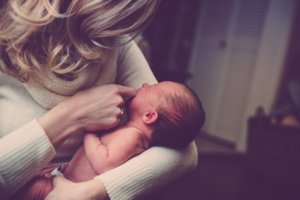
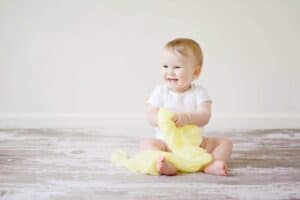
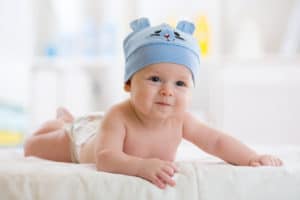
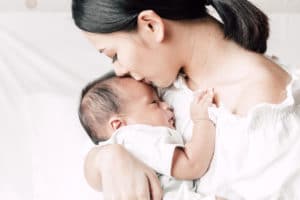
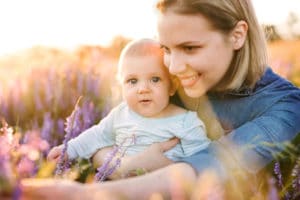

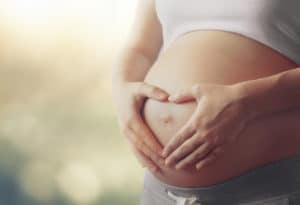



2 thoughts on “Neurodermatitis In Babies: What Helps?”